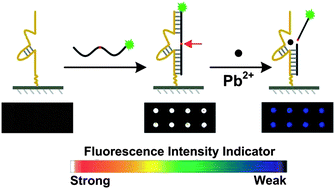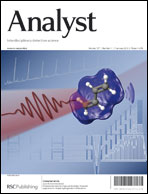DNAzyme-based fluorescent microarray for highly selective and sensitive detection of lead(ii)†
Abstract
A facile microarray-based fluorescent sensor for the detection of lead (II) was developed based on the catalytic cleavages of the substrates by a DNAzyme upon its binding to Pb2+. The release of the fluorophore labelled substrates resulted in the decrease of fluorescence intensity. The sensor had a quantifiable detection range from 1 nM to 1 μM and a selectivity of >20 fold for Pb2+ over other metal ions.


 Please wait while we load your content...
Please wait while we load your content...